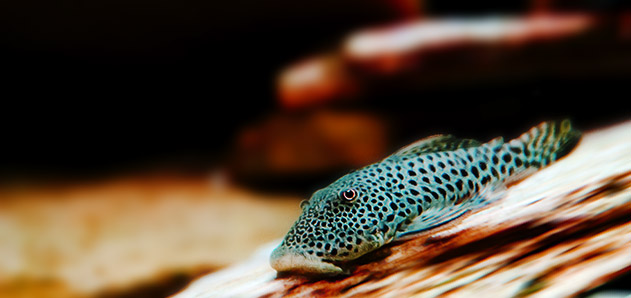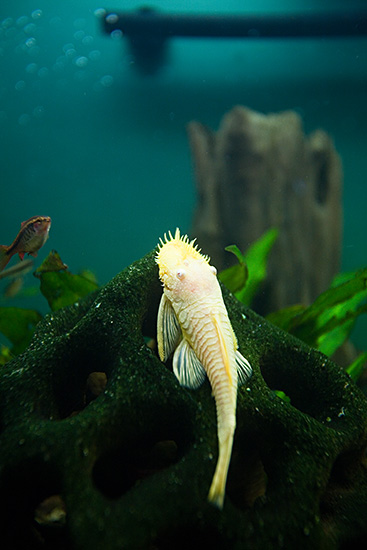 The two-part scientific naming system has been around ever since Carl Linnaeus first set the groundwork for it in the 1700’s. That “Genus species” system hasn’t changed a whole lot since then, but actually assigning a species a “new” name or classifying it as an already-described species can be a long and often confusing process. Is it a new species? Is it a different life stage of species X? What about geographical variations? Or natural variations? Or genetic mutations?
The two-part scientific naming system has been around ever since Carl Linnaeus first set the groundwork for it in the 1700’s. That “Genus species” system hasn’t changed a whole lot since then, but actually assigning a species a “new” name or classifying it as an already-described species can be a long and often confusing process. Is it a new species? Is it a different life stage of species X? What about geographical variations? Or natural variations? Or genetic mutations?
This is a problem that the aquarium trade started to encounter. Fish would enter the trade soon after “discovery” with no official or consistent naming – most notably in this case, catfish for the Loricariidae family, many of which are commonly known as “plecos”. When the aquarium industry started blooming in the late 20th century, these fish were entering the trade en masse without that “Genus species” name that so many are accustomed too. The same fish may be called something different by every collector, distributor, aquarium store and hobbyist that encounters it, so no one really knew what anyone else had. Then, in the 1980’s, a fish importer and a German magazine editor from “Die Aquarien und Terrarienzeitschrift” (DATZ) came up with a solution. They designed a numbering system for the unknown fish, starting with L001 – “L” standing for Loricariidae – and assigning a new number (L002, L003, etc) to each undescribed fish. Around the same time, another German magazine called “Das Aquarium” also created as similar numbering system using “LDA” (Loricariidae Das Aquarium) instead of “L”. Some fish may have both an L-number and an LDA-number, although the L-number system is more widespread. Once the official scientific name is created, the old L-number is “retired” (although many can still be found in use in older publications and among hobbyists).
 In 1993, another DATZ editor spawned a new branch of this system to describe nameless Corydoras catfish. In an Internet article about his C-number system, creator Hans-Georg Evers states “Like in the L-codes this system is not meant to be a scientific description. It is just a way to make the people all over the world talk about the same fish.” In addition, Corydoras that have not been identified or assigned a C-number may also be known by a CW-number on the Corydoras World website that hosts Evers’s article.
In 1993, another DATZ editor spawned a new branch of this system to describe nameless Corydoras catfish. In an Internet article about his C-number system, creator Hans-Georg Evers states “Like in the L-codes this system is not meant to be a scientific description. It is just a way to make the people all over the world talk about the same fish.” In addition, Corydoras that have not been identified or assigned a C-number may also be known by a CW-number on the Corydoras World website that hosts Evers’s article.
These systems have their own pro’s and con’s. This is not a scientific classification or naming system, despite its popularity in the hobby and even some influence into the scientific community. The current L-number listing is well over L400 and the LDA system is over LDA100. Some numbers have eventually been found to describe the same fish and are then combined under one L-number. Some fish from different areas also have different L-numbers for the different regions. It does, however, give us a reference for fish that may be otherwise nameless except for common names created by distributors and store owners. Like the Latin naming system that has been around since Linnaeus, it lets people cross borders and language barriers in one common way to share and discuss these popular freshwater fish. Hope this helps explain those vague numbers for you all!
Thanks,
Eileen
Chaetostoma and Ancistrus Pleco images referenced from wikipedia and originally posted by pl:user:lcamtuf
 That Fish Blog – Aquarium Advice and Information
That Fish Blog – Aquarium Advice and Information

3 comments
Pingback: Clown Pleco (Panaqolus maccus) - Size, Diet And Care Guide
Pingback: Blue Phantom Pleco - Size, Profile And Care Guide
Pingback: Blue Phantom Pleco - Size, Tank, Care,Diet, Growth